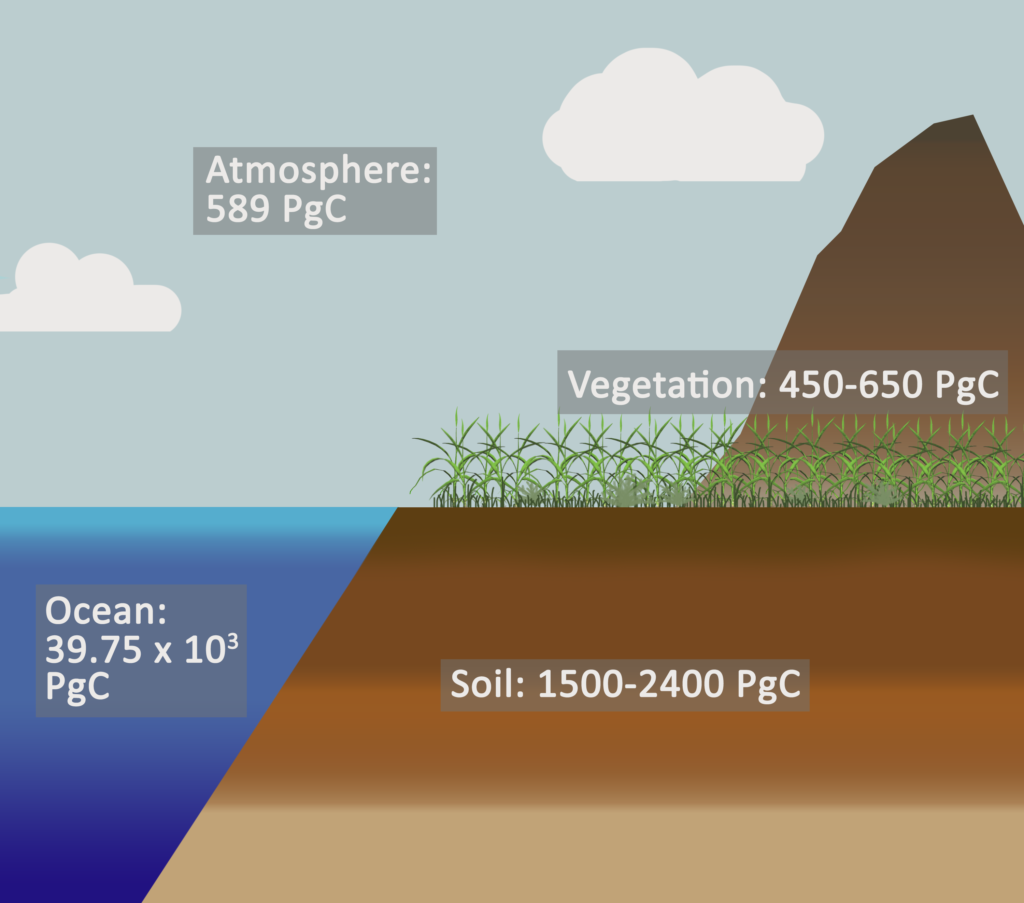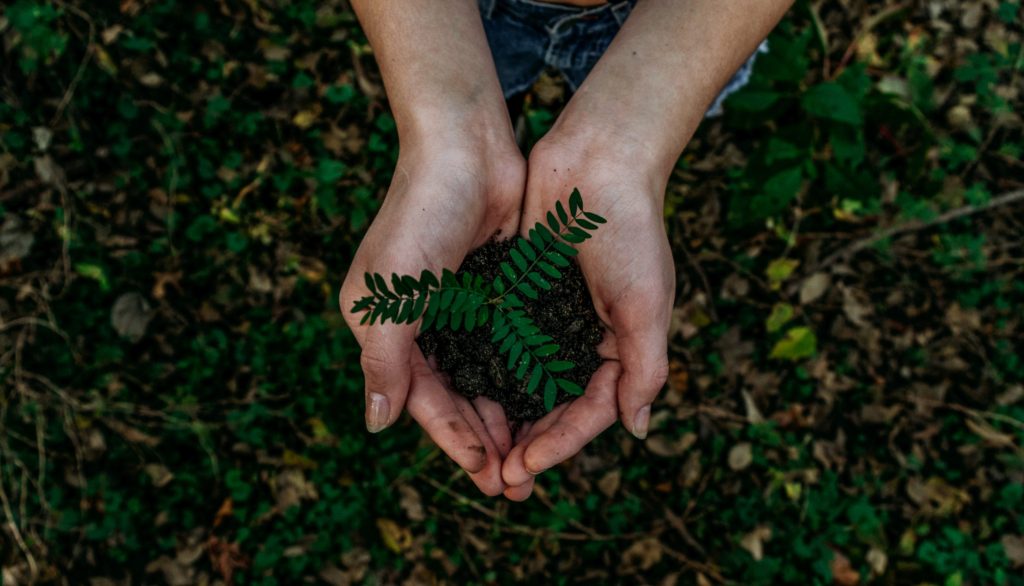When you think of food, what do you think of? How about clothing? A house? Life-saving medications? What about when you think of rivers? Of forests? All of these come from or depend on soil.
“There can be no life without soil and no soil without life.”
–Charles E Kellogg, USDA Yearbook of Agriculture, 1938
Soil Provides
Many resources are derived from the soil or microorganisms in the soil. Many more are grown out of healthy soils, and water is stored in and filtered through soil. The soil of course also provides habitat for many creatures and structural support for our buildings. These are ecosystem services, our gifts from the earth.
Definition. Ecosystem Services: benefits people obtain from ecosystems.
–The Millennium Ecosystem Assessment, 2005
These can be classified into categories of services:
– provisioning (products obtained)
– regulating (benefits obtained from the regulation of processes)
– cultural (nonmaterial benefits obtained through spiritual
enrichment, cognitive development, reflection, recreation, and
aesthetic experiences)
– supporting (necessary for the production of all other ecosystem services)
What I haven’t yet mentioned is the service that I didn’t know about until I began studying ecosystems and soils, and it’s the epicenter of a lot of research and discussion. Soils cycle and store nutrients that are vital to all life. These nutrients include nitrogen, which is part of amino acids that make up proteins and DNA as well as an enzyme called Rubisco that helps plants to photosynthesize, and phosphorus, which is key to energy storage and the formation of DNA in living organisms.
Soils also cycle and store carbon (C). In fact, soils hold around 3-5 times more C than either the atmosphere or the entire earth’s vegetation (IPCC, 2013. Stocker et al. 2013). Additionally, soils have the potential to sequester between 0.79 and 1.54 Gigatonnes of C from the atmosphere per year and increase agricultural production, ensuring food security (Amelung et al. 2020). To the point: if we save our soils, they might help save us.

Not Enough
Wait, did I just say “save our soils”? From what? Well, it turns out that we really shouldn’t take soil for granted. Through mismanagement, soils can become less fertile, holding fewer nutrients and less water and supporting fewer organisms. It can also be lost, carried away by wind and water if left loose and bare. Human impact has led to the loss of topsoil and the spread of desertification across the globe.
Definition. Desertification: the degradation of formerly productive land into desert as a result of many factors, including human activities and climatic variations.
–Adapted from IPCC, 2013 and USGS.
The Dust Bowl in North America in the 1930’s was one of the first events that woke us up as to the vulnerability of our soils and how we depend on them to produce crops year after year. 100 million acres, or 400,000 km2, were effected by drought and erosion, upending tens of thousands of families and costing the US billions of dollars. This devastation prompted the creation of some of the first environmental protection initiatives in US: the Soil Conservation and Domestic Allotment Act of 1936 and the Soil Conservation Service, now the Natural Resources Conservation Service of the USDA. As we continue to exploit our natural resources and add greenhouse gases to the atmosphere though, events like the Dust Bowl could become larger and more frequent (Cowan et al. 2020).
“The nation that destroys its soil destroys itself.”
–Franklin Delano Roosevelt
Too Much
Since the 1930’s, we have made a lot of changes to our agricultural practices, some with unforeseen consequences. Learning how to make nitrogen fertilizers with the Haber-Bosch Process and mining for phosphorus have allowed us to overcome common limitations for food production and support the human population explosion. Yet these aren’t without cost.
These and other nutrients (almost always potassium, often calcium, magnesium, and sulfur) that are added to agricultural fields impact more than crop production. Much of the fertilizer gets washed away with loose topsoil, ending up in water and setting off a chain of events called eutrophication.
Definition. Eutrophication: excessive plant and algal growth due to the increased availability of one or more limiting growth factors needed for photosynthesis (sunlight, carbon dioxide, and nutrients), leading to toxic algal blooms and hypoxic (low-oxygen) waters that can kill fish and seagrass and reduce essential habitats.
-Adapted from Chislock et al. 2013 and NOAA
The Muddy Future
You can probably imagine what a future might look like with decreased ability to grow food, toxic water supplies, and the dying off of fish and water habitat. Not to mention the many other looming environmental changes. The bright side is that these effects aren’t necessarily inevitable.
We are, and almost always have been, changing the ecosystems around us and the global ecosystem collectively, manipulating the environment for human uses. Recognizing that we are not separate from nature but instead a keystone species that impacts ecosystems allows us to take responsibility for the harm – and the good – that we have done and plan out positive changes we can make.
Definition. Keystone species: Species that has a much greater impact on ecosystem processes than would be expected from its biomass (or abundance).
–Principles of Terrestrial Ecosystem Ecology by Chapin, Matson, and Vitousek.
Admittedly there are few if any black and white solutions. The world is complex, and A plus B does not always equal C. In fact, it’s sort of more like A plus B minus C times D to the E power divided by F sometimes equals G, under specific conditions. I therefore can’t give you any straightforward easy solution to everything. However, we are finding ways of doing things better than they were previously done. We just need to keep up hope and move forward with purpose!
More About Soil
I’m not an exhaustive resource for information, and others have already done a great job communicating about soil. Here are some resources if you’d like to know more:
Soils Revealed website and map by The Nature Conservancy, Cornell, ISRIC, and the Woodwell Climate Research Center. This is an amazing resource that describes some of the importance of soil and then allows you to visualize historic, current, and future projections of soil organic carbon and land cover.
“Soil carbon is a valuable resource, but all soil carbon is not created equal” article by Dr. Jocelyn Lavallee and Dr. M. Francesca Cotrufo in The Conversation. It’s a quick read with a great metaphor for how carbon is stored and utilized in soil.
Kiss the Ground 2020 film. While this film isn’t the most scientific, it offers some broad insights and highlights the hope that we can find in caring for our soils.
